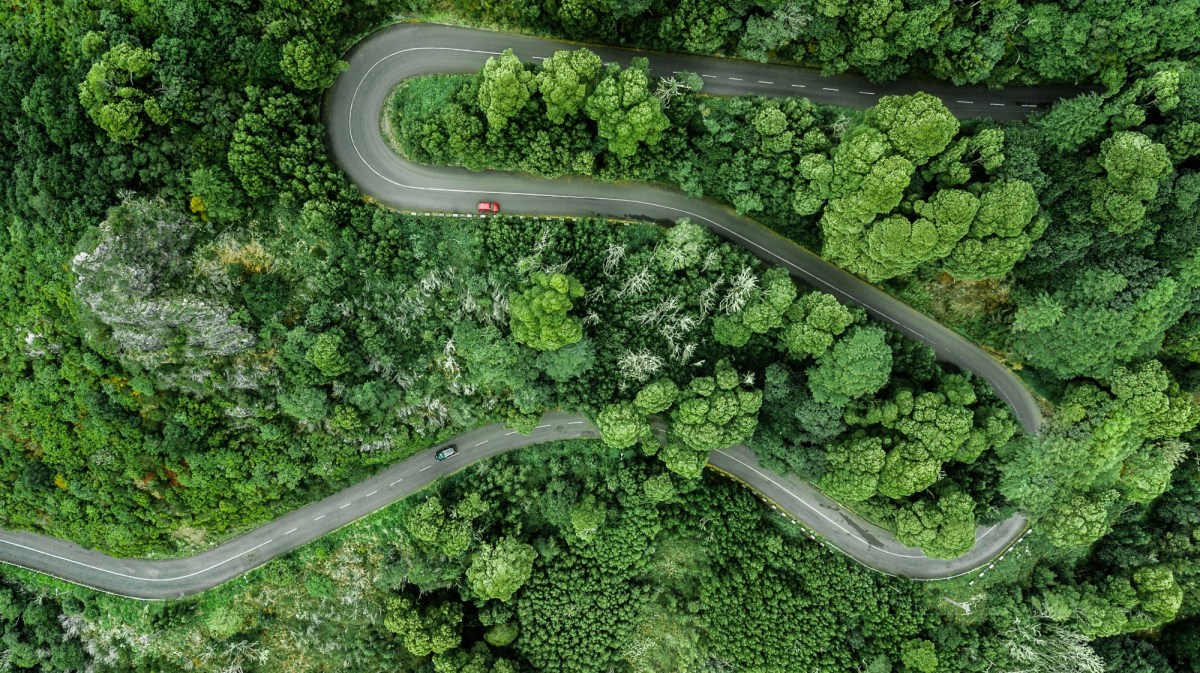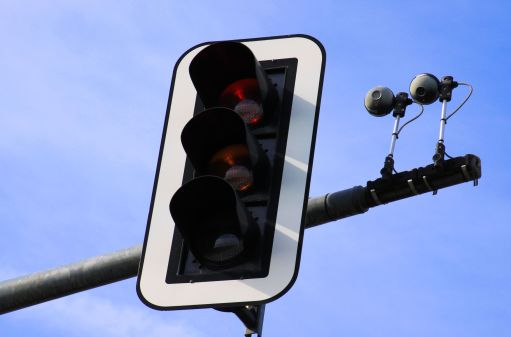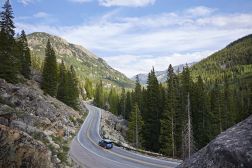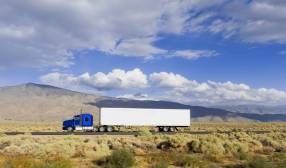Utah’s ‘talking’ cars project enters second phase

The latest phase of a connected vehicle project led by the Utah Department of Transportation offers glimpses of how roadway warnings could soon be piped directly into drivers’ dashboards.
The department wrapped up the first phase of a five-year $50 million project with Panasonic over the summer, deploying 69 roadside devices along several of the state’s most treacherous corridors. The devices collect data from 35 fleet vehicles outfitted with radios that report metrics like windshield wiper speeds, tire traction levels and acceleration and braking rates ten times per second. Blaine Leonard, a transportation technology engineer who leads UDOT’s connected vehicle programs, told StateScoop it’s just the first step of a more ambitious project.
“Necessarily we’re doing that with vehicles we own,” Leonard said. “And in a future phase, we’ll probably bring in some partners and put it on vehicles that they own, but ultimately for this to really be effective, every car on the road should have and needs to have this communications equipment.”
While the first phase of Utah’s project focused on cars providing the state a more accurate picture of congestion, accidents and general roadways conditions, this summer’s phase has focused on sending drivers warnings about hazards and accidents detected by other vehicles. Future phases will aim to further expand the project, eventually leading to an open-AI transportation platform that allows everyone to share road-safety data, Leonard said.
Personalized messages
The Utah Department of Transportation currently uses a cloud platform to collect data from the participating vehicles, but with billions of data points flying in, machine learning algorithms are needed to scan the data streams for signs of abnormality, like sudden braking.
Getting automatic updates about roadway conditions allows the department to react to crashes or weather developments within seconds, Leonard said, rather than the 15 minutes it may take for someone to phone in a warning. But warning drivers in their cars, he said, could be one of the most promising ways to improve roadway safety.
“We’re going to tell the vehicle when it’s going up one of these canyon roads that they’re approaching a sharp curve and that they’re going too fast,” he said. “We have fixed signs that say sharp curve, 45 mph or 25 mph, and sometimes we just kind of ignore it. But there’s some studies that indicate that if that message were to show up on your dashboard, you as a driver think, ‘Well, that’s for me, that’s not a generic sign for the other bozos that don’t know how to drive.’”
Utah recorded 248 traffic deaths last year, 94% of which were attributed to human error. While autonomous vehicles could someday prevent such deaths, advocates of connected vehicle technology like Leonard want to push the death figure closer to zero with technology that’s available today. There were 36,120 traffic deaths nationally last year, and the National Highway Traffic Safety Administration estimates that 80% of crashes that don’t involve impairment could be made less serious or averted entirely through connected vehicle technology.
‘They’re not listening to us’
Leonard said the connected vehicle technology used in Utah has so far proven a much more effective way of gathering information about road conditions than the state’s existing roadside sensors, which are spaced as far as 10 miles apart. State transportation departments across the country have in recent years ramped up their use of in-car probe data to inform operations, and Georgia’s transportation department is also working with Panasonic’s connected vehicle technology.
But states now face at least two major barriers before connected vehicle technology can go mainstream. One is budget cuts following pandemic-fueled revenue downturns. Leonard said his project was supposed to be completed within five years, but he only got 30% of the funding he needed for the second phase of the project this year. The remainder of the second phase, he said, which will focus on warning cars about nearby pedestrians, will probably have to wait until next year. And dreams of that open, platform-agnostic platform integrating statewide data from many sources, including the general public, is still years away from being realized.
The other obstacle concerns access to the wireless radio spectrum needed for cars to communicate with roadside devices. In 1999, the Federal Communications Commission handed over 75 megahertz of wireless spectrum in the 5.9 gigahertz band to be used by “intelligent transportation systems.” But in recent years, noting that connected vehicle technology has “evolved slowly and has not been widely deployed,” the FCC has proposed reallocating some of that spectrum to wireless internet carriers.
“We’re telling them it’s not enough, but they’re not listening to us,” Leonard said of the FCC’s decision. “They don’t really care. They’re not listening to us about that and across the board, states, federal government, the private companies, we’re all telling them we need this 75 MHz. It’s important — we need it to save lives.”
Connected vehicle technology development also slowed down in 2017, when the Trump administration reversed an Obama-era mandate that would have required new cars to be equipped with the kinds of sensors allowing communication with roadside infrastructure. Ford has committed to equipping all its new vehicles with connected vehicle technology next year, but others, like Toyota, have backed off such plans, spooked by the FCC’s recent policy reversals.
In Utah, though, all signs point toward the technology working, Leonard said. Separate from its work with Panasonic, Utah has also equipped city buses with equipment to communicate with traffic signals, requesting “a little extra green time” if they’re running behind schedule. And while it’s improved both ridership and reliability in places where the program was implemented, he said, that was only a precursor to projects to improve roadway safety.
“That’s out ultimate goal here, is to get that information out of the vehicle that can help us and give them information that can help them,” Leonard said. “Safety is our ultimate goal with all of this.”





